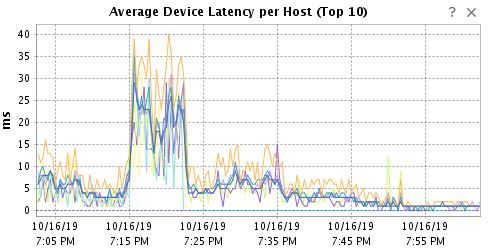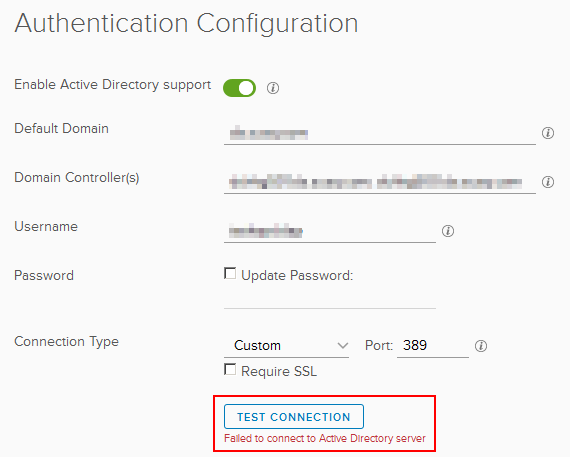Vsphere Client Failed To Install Hcmon Driver Windows 10
Device drivers improve sound, graphics, networking, and storage performance. If you perform a custom VMware Tools installation or reinstallation, you can choose which drivers to install.
Can employers access any information from your personal pc when using VMWare Horizons Client? Vm constantly hits 100% cpu utilization, any way to set a max limit it can get to? Vsphere client 5.5 fails to install the hcmon driver (.SOLVED.). Re: VI Client 5.1 fails to Install - HCMON Driver n2spcmusc Mar 26, 2015 6:49 PM ( in response to jimcallaghan ) I found this same issue upgrading my vSphere client to 6.0 on a Win7 system with the Lumension Endpoint Protection 4.5 client installed.
The set of drivers that are installed when you install VMware Tools depends on the guest operating system and the VMware product. For detailed information about the features or functionality that these drivers enable, including configuration requirements, best practices, and performance, see the documentation for your VMware product. The following device drivers can be included with VMware Tools.
On Windows guest operating systems whose operating system is Windows Vista or later, the VMware SVGA 3D (Microsoft - WDDM) driver is installed. This driver provides the same base functionality as the SVGA driver, and it adds Windows Aero support.
For example, Windows Server 2008 defaults to LSI Logic SAS, which provides the best performance for that operating system. In this case, the LSI Logic SAS driver provided by the operating system is used.
VMware supplies a special SCSI driver for virtual machines that are configured to use the BusLogic virtual SCSI adapter. Virtual machines do not need this driver if they do not need to access any SCSI devices or if they are configured to use the LSI Logic virtual SCSI adapter.
The driver is included as part of the VMware Tools package or comes bundled with VMware ESX/ ESXi. It is available on the host as a floppy image at /vmimages/floppies/vmscsi.flp. The driver can be used in Windows XP, Windows Server 2003, or Windows 2000.
When you install VMware Tools, a VMXNET NIC driver replaces the default vlance driver.

- File Introspection Driver: The File Introspection driver uses the hypervisor to perform antivirus scans without a bulky agent. This strategy avoids resource bottlenecks and optimizes memory use.
- Network Introspection Driver: The Network Introspection driver supports NSX for vSphere Activity Monitoring.
Vsphere Client Failed To Install Hcmon Driver Windows 10 Bootable

Do not delete or replace existing inbox drivers for Linux that are distributed by your OS vendors. Deleting or replacing these drivers might cause conflict with future updates to the drivers. Contact your OS vendor or OS community for availability of specific updates to drivers.
Vst plugin slicex free. See http://kb.vmware.com/kb/2073804 for information about availability, maintenance, and support policy for inbox drivers for Linux.

If you use Workstation or Fusion, you can install the Shared Folders component. With Shared Folders, you can easily share files among virtual machines and the host computer. The VMHGFS driver is a file system redirector that allows file system redirection from the guest operating system to the host file system. This driver is the client component of the Shared Folders feature and provides an easy to use alternative to NFS and CIFS file sharing that does not rely on the network. For Linux distributions with kernel version 3.10 and later, a new FUSE based Shared Folders client is used as a replacement for the kernel mode client.
VMware Tools installation include the VMware AppDefense, a security management and monitoring solution. AppDefense agent can be installed on the guest virtual machine using the VMware Tools installer. However, VMware Tools cannot install the AppDefense component automatically. You need to install the component manually.
Hi All,
Can I ask for a bit of advice. I am looking at a HPE Server (ML350 Gen10) for a client (accounting firm) and wondered what specification you would use for the following scenario.
1 x VM – Windows Server 2019 / DC and network services / SQL Express running 2 server apps (IRIS and Virtual Cabinet)
– Note: SQL Express has a max database size limit of 10GB
– IRIS Server – Requirements 2 GHZ Processor / 16GB RAM / 300GB disk space
– Virtual Cabinet Server – Requirements 3Ghz Processor / 4GB RAM / 300GB disk space
1 x VM – Windows Server 2019 / RDS / 9 users running:
– Sage – Requirements 2Ghz Processor / 8GB RAM / Min 5GB disk space
– IRIS Client – Requirements 3Ghz Processor / 4GB RAM / Min 15GB disk space 360mpgui v1.1.3.0.exe.
– Virtual Cabinet Client – Requirements 2Ghz Processor / 4GB RAM / 150GB disk space

The current server is as follows:
– 1 x HP ML350p Gen8 with 24GB RAM / Raid 10 SAS drives
– Vmware ESXi 5.0 (Yes, this definitely should be upgraded)
– Services: DC running the server software detailed above.
The current Windows PC’s are as follows:
– i5 or i7 Processor with a minimum 8GB of RAM. They are never maxed.
Vsphere Client Failed To Install Hcmon Driver Windows 10 64-bit
Any advice on the right specification hardware and the correct VMware licensing would be greatly appreciated.